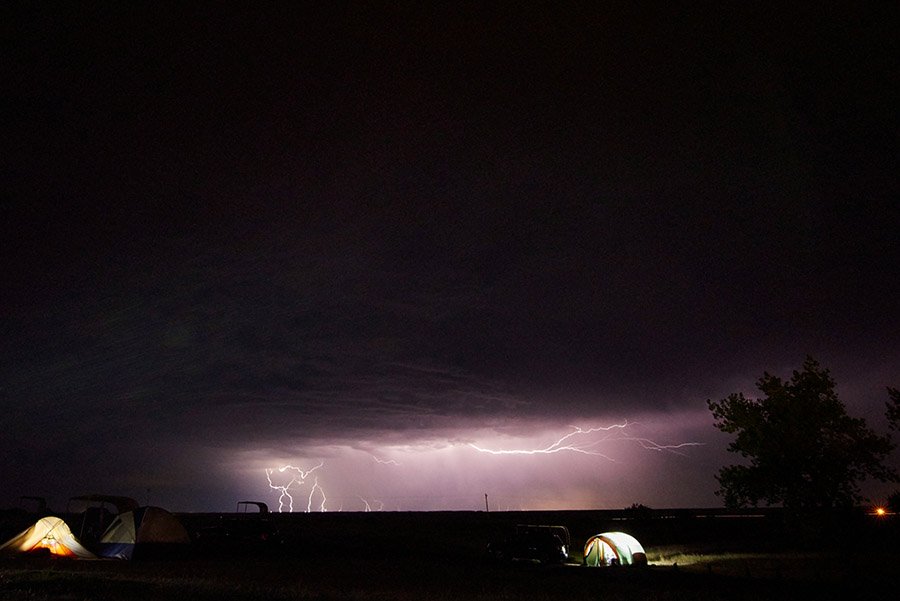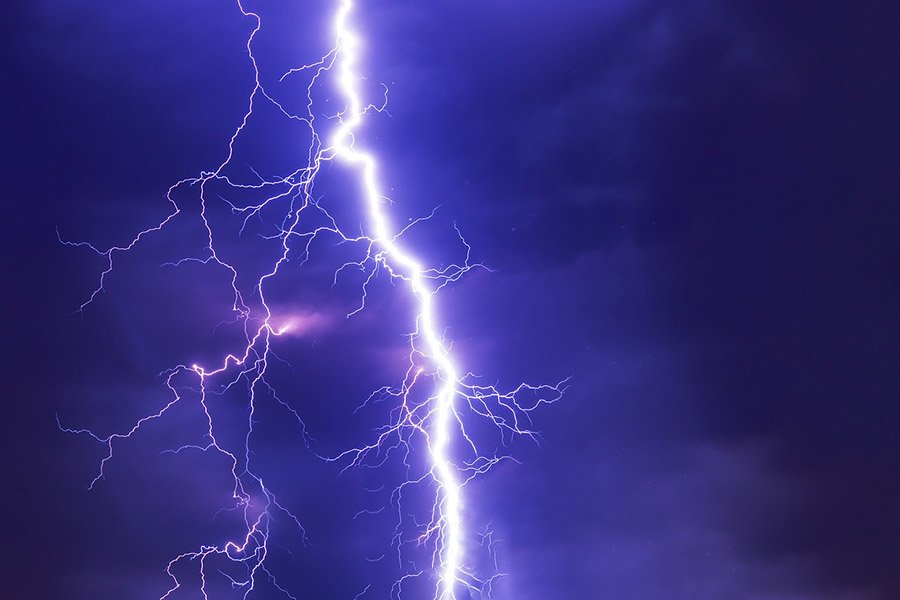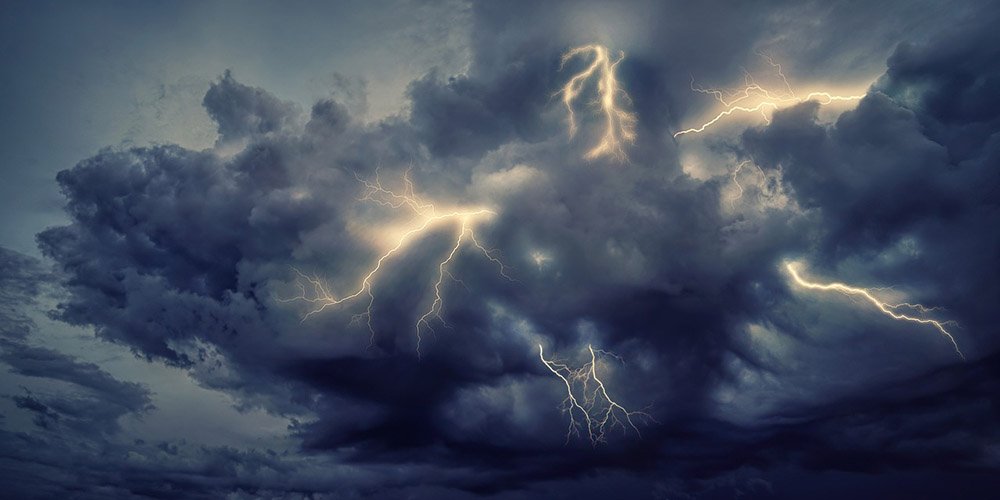Camping in a Thunderstorm: Safety Tips and Best Practices
Camping in a thunderstorm can be both thrilling and challenging. While the sound of rain and thunder can add to the adventure, it’s crucial to prioritize safety. With the right preparation and knowledge, you can navigate these conditions confidently. This guide provides essential tips and best practices for staying safe while camping in a thunderstorm.
1. Understanding Thunderstorm Risks
Thunderstorms are complex and carry various dangers, including lightning, strong winds, hail, and flash floods. Each of these elements poses distinct risks:
- Lightning: Lightning can strike with little warning and can cause fatalities or severe injuries. It can hit directly, travel through the ground, or jump from nearby objects.
- Strong Winds: These can break tree limbs or uproot trees entirely, which can damage tents and injure campers.
- Hail: Hail can suddenly occur during some thunderstorms, causing injury and damaging equipment.
- Flash Floods: These can rapidly develop, especially near streams or low-lying areas, and are capable of sweeping away anything in their path.
Understanding these risks thoroughly can significantly enhance your preparedness for a thunderstorm while camping.
2. Checking the Weather Forecast
Prior to any camping trip, it is vital to consult the weather forecast. Utilize multiple sources to ensure accuracy, such as NOAA Weather, local news weather apps, and national services. Look for signs of an impending storm, such as:
- Cloud Formation: Rapidly forming or darkening clouds can indicate storm development.
- Changes in Wind: Sudden gusts or shifts in wind direction can precede a storm.
- Drop in Temperature: A noticeable drop can signal an approaching front.
- Sound and Smell: A distant rumbling or a fresh, charged scent can suggest an imminent storm.
Consider using weather apps on your phone that provide real-time updates and alerts. Staying informed helps you make timely decisions about your safety. It’s also helpful to have a weather radio that can provide updates even when you have no cell service. By understanding these signs and regularly updating your weather information, you can make safer decisions about continuing, postponing, or cancelling your trip.
Also read: Camping in the Rain: Our Best Tips and Hacks

3. Choosing a Safe Campsite
Selecting a safe campsite is crucial when camping in potential thunderstorm conditions. When selecting a campsite, especially during seasons prone to storms, consider the following safety measures:
- Elevation: Choose areas that are not the highest point: avoid high ground, ridges, and open fields where lightning strikes are more likely.
- Tree Cover: Instead, look for a spot with natural protection, like dense forests or valleys, but avoid areas with large, old trees that could fall during strong winds. Opt for areas with younger, shorter trees that are less likely to be struck by lightning.
- Distance from Water: Avoid setting up camp near water bodies like rivers, lakes, or streams, which can be prone to flash flooding, but also because water attracts lightning.
- Open Spaces: Stay away from large open fields that can leave you exposed to lightning and wind.
4. Setting Up Your Tent
A sturdy, well-anchored tent is essential for weathering a thunderstorm. Proper tent setup not only keeps you dry but also enhances your overall safety. Here are some useful tips:
- Use extra stakes and guylines to secure your tent against strong winds.
- Ensure your tent is equipped with a robust rainfly to keep the interior dry.
- Avoid setting up your tent near tall trees or isolated tall objects that could attract lightning.
- Adding a tarp over your tent can provide extra protection and help channel water away from your tent.
- Investing in a high-quality tent designed to withstand adverse weather conditions is crucial. Here are additional tips for setting up your tent:
- Position your tent so that the strongest structure faces the prevailing wind direction to minimize impact.
- Consider a double-layer tent where the outer layer acts as a shield against rain and debris.
- Use a groundsheet and a tent footprint to help insulate your tent from ground currents caused by lightning.
- Proper setup not only provides comfort but significantly increases your safety in adverse conditions.
5. Lightning Safety
During a thunderstorm, it’s safest to stay inside your tent but avoid touching the tent walls. If you find yourself outside as a storm approaches, immediately seek shelter in a vehicle or a low area that isn’t prone to flooding. Here’s what to do if caught in the open:
- Avoid Conduction: Stay away from metal fences, poles, and other conductive structures.
- Minimize Ground Contact: By minimizing your contact with the ground, you reduce the risk of ground current affecting you. Use insulating materials if available.
- Stay Apart: If in a group, spread out to reduce the number of injuries if lightning strikes the ground.
- Assume the lightning position: crouch down with your feet together, minimizing contact with the ground. This reduces the risk of electrical currents traveling through the ground and into your body.
- Avoid metal objects and electronics, which can conduct electricity. Disconnect and store electronic devices to avoid electrical hazards.
For more detailed lightning safety guidelines, you can also read the CDC Thunderstorm Safety guidelines.

6. Flash Flood Safety
Flash floods are a serious risk during thunderstorms. Be aware of the terrain and identify potential flood zones. If there is a risk of flash flooding, move to higher ground immediately. Stay informed by listening to weather updates and alerts.
Knowing the topography of your campsite and acting quickly can prevent dangerous situations. If camping in a canyon or valley, always have an escape route planned in case water levels rise suddenly.
Also read: Camping with Cats: Our Best Tips
7. Preparing an Emergency Kit
Always have an emergency kit ready! Your emergency kit should be tailored to the specific risks associated with thunderstorms and should include:
- Communication Tools: Satellite phones and emergency GPS trackers can be life-saving in areas without cell coverage.
- Waterproof Bags: Keep all sensitive items in waterproof bags to prevent damage.
- Survival Gear: Include items like a multi-tool, paracord, and fire-starting equipment that can be crucial in emergency situations.
Having these items on hand can make a significant difference in an emergency. Consider packing a whistle and a waterproof map of the area to aid in navigation and signaling for help.
8. What to Do If You Are Camping in a Thunderstorm
If you find yourself camping in a thunderstorm, here is how to stay safe:
- Seek Shelter: Move to a sturdy building or a vehicle if possible.
- Stay Low: Avoid high ground, open fields, and isolated trees.
- Minimize Contact with the Ground: Sit or crouch on insulated materials like sleeping pads or backpacks.
- Unplug Electronics: Disconnect and store electronic devices to avoid electrical hazards.
- Wait It Out: Stay in your shelter until the storm passes, typically 30 minutes after the last thunderclap.
- Stay Dry: Use waterproof clothing and gear to stay as dry as possible. Wet conditions can lead to hypothermia, even in warmer weather.
- Stay Calm: Keep a clear head and make informed decisions. Panicking can lead to mistakes.
If you get caught in a thunderstorm while you are inside your tent, here’s an action plan:
- Create an Internal Shelter: Use sleeping bags and pads to create an insulated layer between you and the ground inside your tent.
- Monitor the Storm’s Progress: Use a battery-powered NOAA radio to keep track of the storm’s movement.
- Stay Informed: Keep communications open with park authorities or local emergency services if possible.
Final Thoughts
Camping in a thunderstorm can be safe and manageable with the right preparation and knowledge. By understanding the risks, checking weather forecasts, choosing a safe campsite, setting up your tent correctly, and knowing what to do during a storm, you can ensure a safe and enjoyable camping experience. Stay informed, stay prepared, and enjoy the adventure that comes with camping in all weather conditions.








